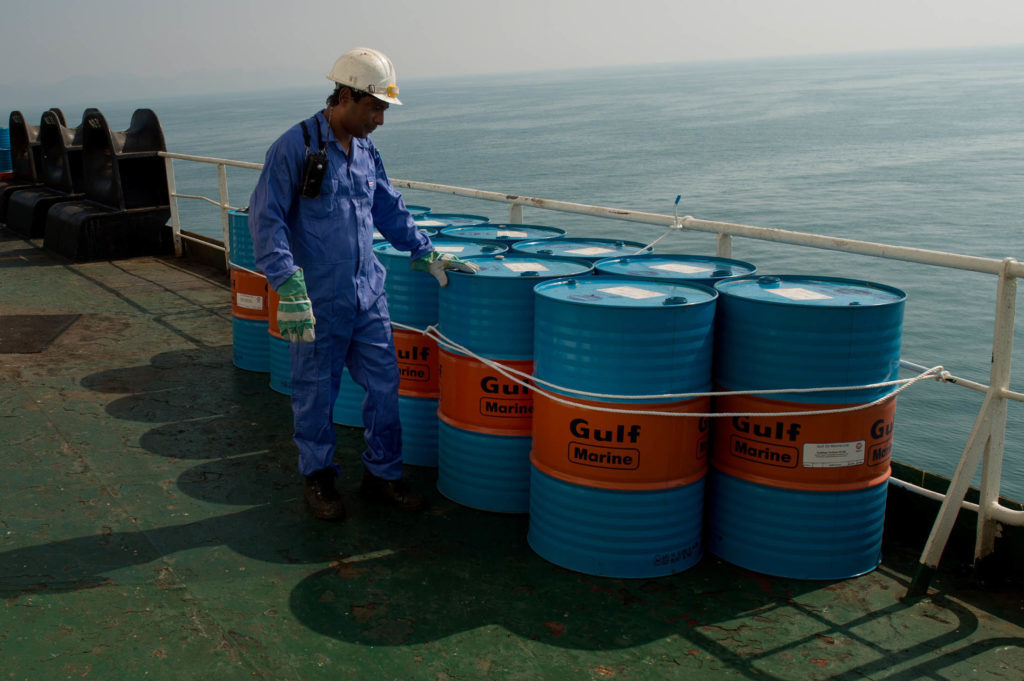
Brent crude could see the biggest overhaul since the North Sea crude became a major benchmark more than 30 years ago as the industry considers including oil from as far away as Central Asia, West Africa and U.S. shale fields in its price assessment.
The price of Brent is key for the global oil industry as it underpins more than half the crude traded worldwide in the physical market plus billions of dollars in financial derivatives traded by big Wall Street banks, hedge funds and others.
S&P Global Platts, the agency that sets the industry standard for the benchmark, said in a statement on Monday that it was proposing two major changes for the way that it calculates the price of Brent.
First, it wants to include in its current price assessment not only the crude traded on North Sea terminals, but also what’s delivered in the oil hub of Rotterdam. Second, it’s seeking industry feedback on a proposal to include grades from outside the North Sea region for the first time, also delivered in Rotterdam.
“This is an historic moment in North Sea crude,” Dave Ernsberger, global head of energy pricing at S&P Global Platts, told reporters in Singapore, where the global oil industry is gathered at the annual Asia Pacific Petroleum Conference (APPEC).
Output Drop
North Sea production has dropped significantly since its heyday in the 1980s and 1990s, prompting Platts to consider including grades from outside the region to bolster liquidity for the first time since Brent starting trading in 1987. The drop in liquidity has made the benchmark vulnerable to trading plays, with some market participants at times taking big positions that have moved prices and prompted complaints.
The potential inclusion of U.S. crude in the Brent benchmark is the latest indication of how the American shale boom is revamping the global energy-trading industry. The U.S. is now exporting more than 2 million barrels a day of crude oil regularly, significantly more than OPEC members such Algeria or Venezuela. Most of the exports come from Midland, the city a the centre of the Permian basin in Texas.
Currently, Platts bases its so-called Dated Brent assessment on the values of five crude grades pumped in the North Sea on a free-on-board basis (FOB), rather than on a delivered, or cost, insurance and freight (CIF) basis. The five grades — Brent, Forties, Oseberg, Ekofisk and Troll — are often known by the BFOE acronym.
Industry Consultation
Platts is now seeking an industry consultation to use both the current free-on-board pricing in North Sea terminals and a Rotterdam cost-and-freight price. The move would likely double the volume of crude underlining the benchmark, currently at about 900,000 barrels a day, it said. Global oil production is hovering at about 100 million barrels a day.
Beyond the North Sea crude, Platts named new potential varieties, including CPC Blend from Central Asia; WTI Midland from the U.S.; and Qua Iboe and Forcados from West Africa. Platts also named North Sea grades Statfjord and Gullfaks in its proposals.
Platts asked the industry to respond to its consultation by Dec. 10, signaling that the price reporting agency could announce final changes in early 2019. Traditionally, it uses the International Petroleum Week, the biggest gathering of the oil industry in London that’s usually held in February, to announce big changes in the Brent benchmark.
Support For Change
Platts is likely to make the changes in two steps, first including Rotterdam trading in the benchmark, followed by the expansion to grades to outside the North Sea.
“There is broad support to move in a expedited way,” Ernsberger said. “We have been talking about this with folks in the market for several months. We have found lots of support.”
The changes in Brent will need the support of the industry, crucially of Royal Dutch Shell Plc, which is the guardian of the so-called SUKO 90 master agreement contract that serves as the basis for physical trading around the benchmark. Vitol Group, the world’s largest independent oil trader, usually has also a big voice in any change.
Recommended for you
